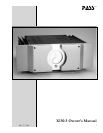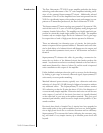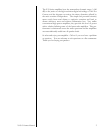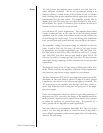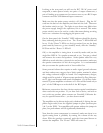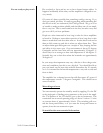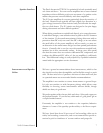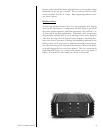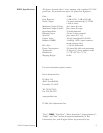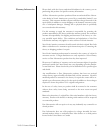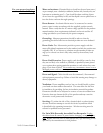
2
X150.5 Owners Manual
The Pass Laboratories ™ X150.5 stereo amplifier embodies the design
technology and refinements of the “X” series amplifiers including exten-
sions of the patented Supersymmetry™ circuit. Additionally selected
refinements of the XA series amplifiers have been incorporated into the
X150.5 to significantly improve this products sonic performance in com-
parison to it’s immediate predecessor, the Pass Laboratories™ X150.
The Supersymmetry™ circuit topology was granted a U.S. patent in 1994,
and was the result of 19 years of effort by legendary analog designer and
company founder Nelson Pass. The amplifier uses highly matched com-
ponents in a classically simple single ended Class A circuit. The amplifier
contains only two simple stages: the first is a balanced Class A gain stage.
Its output drives a bank of high power devices operated as followers.
These are inherently low distortion types of circuits, but their perfor-
mance is improved when operated balanced. Distortion and noise iden-
tical to both halves of a balanced circuit will disappear at the output, and
in a well-matched symmetric circuit, most of the distortion and noise is
identical.
Supersymmetry™ enhances this effect by providing a connection be-
tween the two halves of the balanced circuit that further perfects this
match. Any distortion and noise not already identical to the two halves is
made more identical by a factor of about 10, and the result is improved
noise cancellation at the output of the amplifier.
Unlike feedback techniques where the goal is to correct for the distortion
by feeding a gain stage an inversely distorted signal, Supersymmetry™
seeks merely to create perfect matching.
Matched balanced power circuitry typically sees a distortion and noise
reduction of about 90% (20 dB) through a balanced connection without
any additional effort. The Supersymmetry™ circuit delivers another
90% reduction, so that the X series has about 1/100 of the distortion of
a conventionally simple amplifier. Distortion and noise can still be seen
at the output of one half of the circuit, but since it is virtually identical
on the other half, it goes away at the speaker terminals. This gives good
measured performance, which because a simple circuit produces it, also
sounds excellent.
Previously these kinds of simple Class A circuits have been popular for
their sound quality in low power amplifiers, but have not found applica-
tion at high power levels due to excessive distortion and low efficiency.
Supersymmetry™ overcomes this barrier, delivering the sweetness, stag-
ing, and detail of very simple circuitry up to kilowatt power levels and
beyond.
Introduction



